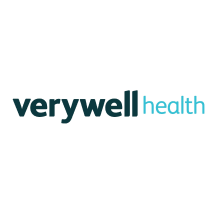The American Academy of Pediatrics (AAP) announced on Tuesday that children aged 6 months to 23 months should receive a COVID-19 vaccine. This recommendation contrasts with recent guidance from federal health officials. The AAP's advice is part of its annual childhood immunization schedule, which also includes vaccines for flu and RSV for individuals aged 18 and younger.
Historically, the AAP has issued its own immunization recommendations since the 1930s. However, this year marks a rare divergence from the Centers for Disease Control and Prevention (CDC). The AAP also advises that Americans aged 18 and under should get vaccinated if they are at high risk for severe COVID-19, reside in long-term care facilities, have never been vaccinated, or live with someone at high risk.
This announcement follows Health and Human Services Secretary Robert F. Kennedy Jr.'s statement in late May that the CDC would no longer recommend the COVID vaccine for healthy children. The CDC later modified its guidance to a “shared clinical decision-making” model, allowing parents to decide on vaccination in consultation with their healthcare providers. Previously, the CDC recommended that everyone aged 6 months and older receive the latest COVID vaccine.
The differing recommendations underscore a growing divide between federal health officials and medical organizations regarding vaccine policies. Dr. Susan J. Kressly, president of the AAP, emphasized the importance of clear guidance amid widespread misinformation. "The academy has been making pediatric immunization recommendations since the 1930s, that has not changed," Kressly stated. "But what has changed is that this year, we’re doing it in the environment of misinformation, which makes it more important than ever that we provide clear and confident guidance, because the majority of American families really depend on us for this guidance."
According to the AAP, children between 6 months and 23 months are at the highest risk for severe COVID-19. The vaccine can help protect them from serious illness. Kressly noted, "We know that this age group, that’s the highest risk for severe disease. And so we want to make sure that those children who are at highest risk and did not live through the pandemic — they were not exposed to COVID viruses during the pandemic — we want to make sure that they are protected as best as possible."
Despite differences in vaccine recommendations, insurers typically rely on the CDC’s Advisory Committee on Immunization Practices (ACIP) to determine coverage. If the ACIP does not recommend certain vaccines, parents may face out-of-pocket costs for their children’s vaccinations. Additionally, vaccines may not be covered by the federally funded Vaccines for Children (VFC) program, which provides no-cost vaccines to eligible children.
Kressly stressed the need for collaboration with policymakers to ensure that VFC vaccines remain accessible in communities. "We need to work with our like-minded policymakers who understand the importance of keeping VFC vaccines available in every community for those children who depend on them," she said. "At the same time, there are children in this country whose vaccines are paid for through commercial insurance, and we are having continuing conversations with major payers to make sure that those vaccines are available as well. Vaccination is part of high-quality preventive care, and we are confident that we can work with the payers to make sure that translates into policy."

 America News
America News

 WEIS Radio
WEIS Radio ABC11 WTVD Politics
ABC11 WTVD Politics Local News in Alabama
Local News in Alabama Associated Press Top News
Associated Press Top News The US Sun Health
The US Sun Health Sun Sentinel
Sun Sentinel Futurism
Futurism KUOW Public Radio
KUOW Public Radio Verywell Health
Verywell Health Delaware Sports
Delaware Sports LiveNOW from FOX Crime
LiveNOW from FOX Crime Nicki Swift
Nicki Swift